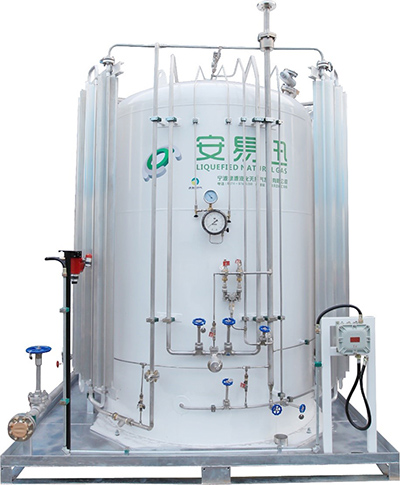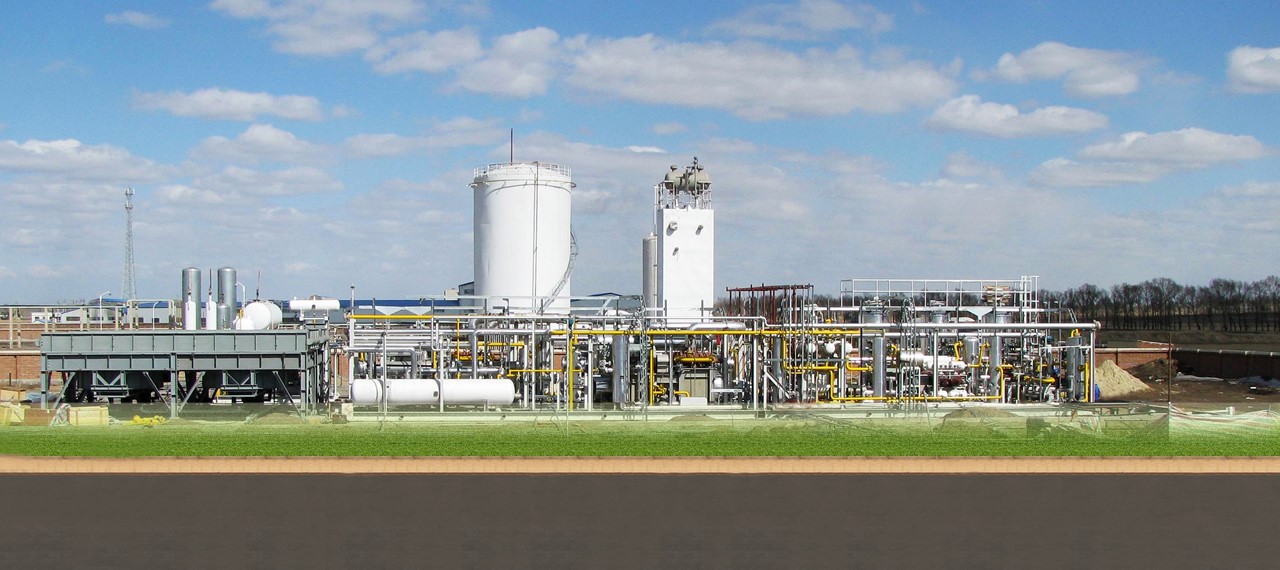
Furuise is a market leader in LNG liquefaction in China. Our plants serve gas field gathering applications as well as pipeline fed applications. In partnership with Furuise, Safrigas serves the 10 – 500mt/day (x0,000m3 – xxx,000m3) market.
Natural gas undergoes a pre-treat process prior to liquefaction. During this stage, various contaminants in the natural gas are removed. Some of the removed products, such as nitrogen and heavier hydrocarbons can sometimes be captured and resold for value.
When pre-treat is completed, the natural gas is refrigerated to -162 °C (260 °F). At these temperatures natural gas becomes a liquid with its volume reduced to 1/600th of its gaseous state volume. The consequent reduction in volume makes it an ideal fuel for transportation and storage.
Our liquefaction plants typically utilize either a Single Mixed Refrigerant Cycle (SMRC) or a Pre-Cooled Mixed Refrigerant Cycle (PC-MRC). These are both simplified refrigeration cycles and require lower OPEX due to lower power and maintenance costs relative to a Turbo-expander plant. The key advantage of the SMRC system lies in the cooling process as few of the system components operate at low temperature.
Skid-mounted LNG Liquefaction Plants
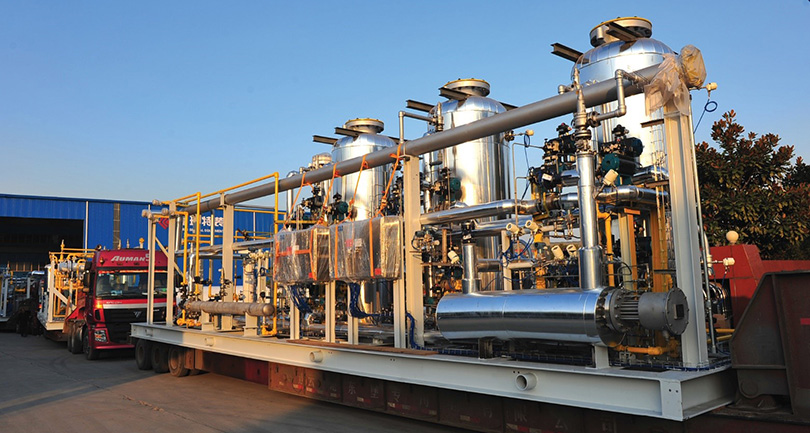
Skid-mounted liquefaction systems provide a variety of benefits. First, the "plug and play" design is simple, reduces field installation cost and is economical. Modular skid mounted gas sweetening, dehydration and other treatment units are available.
Modular designs are ideal for use with stranded gas sources not connected to a network. The LNG plant can be applied to coal bed gas, natural gas, oil-associated gas, or biogas and relocated at a future date.
Talk with us about our efficient and cost effective methods of construction!
Our advantages include:
- Lower construction costs
- Single point construction responsibility
- Quick field installation and commissioning
- Reduced variable on-site construction costs
- The workmanship advantages of a “manufacturing environment”
- Easily moved and re-deployed in the future if desire
Contact us to see how Safrigas can help with your Liquefaction design and equipment needs.
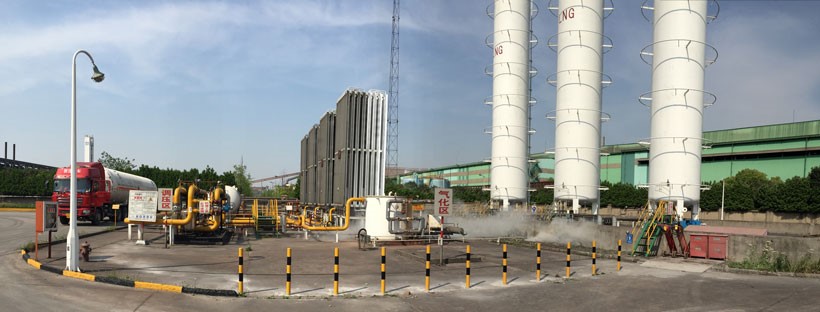
In China more than 500 mid-size cities use LNG Peak Shaving or LNG Satellite Systems built in the last 10- 15 years!
Want to guess who has invested more money and manpower in the LNG equipment designs, manufacturing and handling processes?
In an LNG peak shaving operation, natural gas is purchased by the utility from the pipeline during the non-heating season. Liquefaction occurs during the off-season and the resulting LNG is stored in a cryogenic tank or tanks. During the demand period, the LNG is vaporized (or regasified) and injected back into the pipeline to meet “peak demand”.
Peak shavers typically operate only during colder part of the winter or during the hottest part of the summer. During these periods, a gas prices typically spike due to abnormal demand for power generation required for either heating or cooling. Purchasing “off season” gas for liquefaction and subsequent storage provides a cost effective strategy to protect the utility from seasonal price volatility. Depending on both the location of the facility and relative pricing, imported LNG (to supplement insitu liquefaction) can sometimes be purchased and trucked to the peak shaving site.
Contact us to see how Safrigas can help with your Peak Shave design and equipment needs.
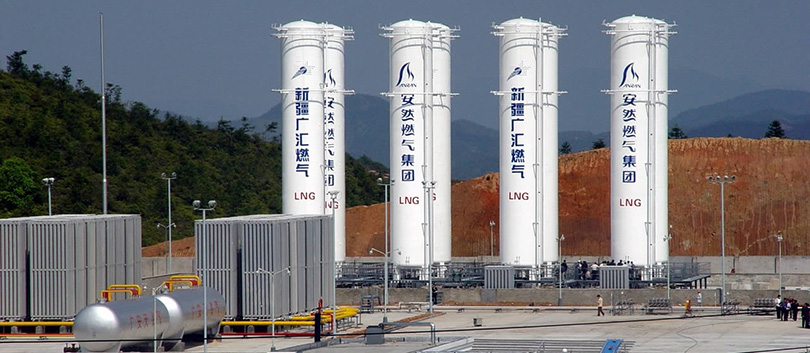
LNG Regasification or Satellite Systems provide natural gas to residential and industrial consumers in regions not currently served by a natural gas pipeline. Excellent opportunities for such systems include much of Bolivia, Peru, Brasil, Colombia as well as much of Africa, British Colombia (Canada) and islands of the Caribbean.
The use of a Satellite System is predicated on the fact that LNG is available! The LNG source could be a marine receiving terminal or a “nearby” liquefaction system. Assuming the LNG is available, LNG is trucked to the Satellite facility and stored in horizontal or vertical cryogenic storage tanks. Typical individual tank capacities range from 60 to 225m3 for a small facility. Tank configurations and capacities allow meeting virtually any required storage volume.
Regasification or vaporization of the LNG prior to injection back into the grid is achieved using ambient vaporizers and/or gas fired water bath vaporizers. The ambient vaporizers are the Aluminum extruded-fin type and require no external energy source. Both the ambient, and if required, waterbath vaporizers are sized to ensure the LNG flow rate at the required pressure can be heated to the Customers gas temperature specification.
Traditional cryogenic insulation can be used, however, VIP piping (vacuum insulated piping) for interconnecting piping is advised when both pressure and temperature of the LNG must be maintained within a tight tolerance. This type of vacuum jacketed stainless steel piping is shop fabricated and utilizes a double wall. The combination of super insulation and vacuum provides the optimum heat insulation.
Micro Bulk Stations are self-contained LNG storage/vaporization units designed for smaller off-grid LNG users. Skid mounted package consists of an LNG liquid storage tank, ambient vaporizer, optional odorant injection systems, pressure monitoring and reduction, remote control accessibility and complete safety string. Both horizontal and vertical tank orientations are available. The product is ideal for mobile home parks, hotels, housing estates and small industrial and commercial users.
Self-contained LNG storage/vaporization units for off-grid LNG users.
- Capacity: 1, 2, 3, 5, 10 and 15m3 (264, 528, 792, 1320, 2,640, and 3,960 Gallons)
- Working Pressure: < 1.6MPa (232 PSIG)
- Insulation: Super vacuum multi-layer insulation
- Use with off-grid commercial accounts, small housing estates, trailer parks and so forth
